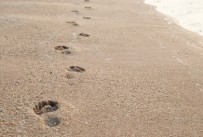Barefoot Running

Barefoot Running
Written by: Dr. Michelle Millner, PT, DPT
Barefoot running seems to be the newest fad in fitness to which many runners and fitness enthusiasts are flocking. Many claim its the answer to injury free running, stating that it encourages more natural running form, encourages efficiency, increases shock absorption, and decreases energy expenditure. But are those claims true? Can the success of one barefoot runner be applied to all runners? Are barefoot runners, indeed less injured than their shod counter parts?
Evidently, a study published in Medicine & Science in Sports & Exercise is questioning those claims. The study designed an experiment to see the effects of barefoot running on the feet and lower leg using MRI imagining. Without going into all the details, the conclusion of the study was that barefoot runners had increased evidence of bone bruising after gradually increasing mileage in barefoot shoes over 10 weeks. There are a number of factors that are still being analyzed and it is too early to say that barefoot running is universally putting people at risk for injury, but it does shed some light on the debate. Particularly, by demonstrating that transitioning to barefoot running requires caution and a slow progression.
So should you run barefoot? The answer is still complicated, but there are some factors to consider before deciding to transition or not.
1. Are you patient enough to transition at the pace of your body and not the pace of you mind? If you are like most people you have been wearing shoes your whole life, which means the little foot muscles are not strong as they need to be to support your body without shoes. Transitioning is a very slow process and you must be willing to stop and put shoes back on when you feel the slightest bit of pain. You must be willing to take a day off your training schedule and ice if that is what your body is telling you to do.
2. Are you strong throughout your hips, core, legs, and trunk? Even slight imbalances in your body can cause you to run with faulty mechanics and put you at risk for injury when you are wearing shoes. Those imbalances might become more pronounced if you take the shoes away.
3. Do you have appropriate running mechanics? Running is a high impact stressful activity and requires your muscles and joints to absorb a lot of shock from the ground. Efficient mechanics can minimize injury by improving shock absorption.
If you are looking to transition to barefoot running because of chronic injuries consider addressing #2 and 3 before transitioning. Barefoot running works for some individuals, but it can put you at risk for other injuries if you don’t address the true underlying causes of the injuries. In the next blog we’ll talk about my favorite foot strengthening exercises.
If you would like more information, please call Professional Physical Therapy and Training at 973-270-7417. Our offices our located within the YMCA locations in Madison and Summit, NJ. You do not need to be a member of the YMCA to visit with us.
Image courtesy of vorakorn / FreeDigitalPhotos.net